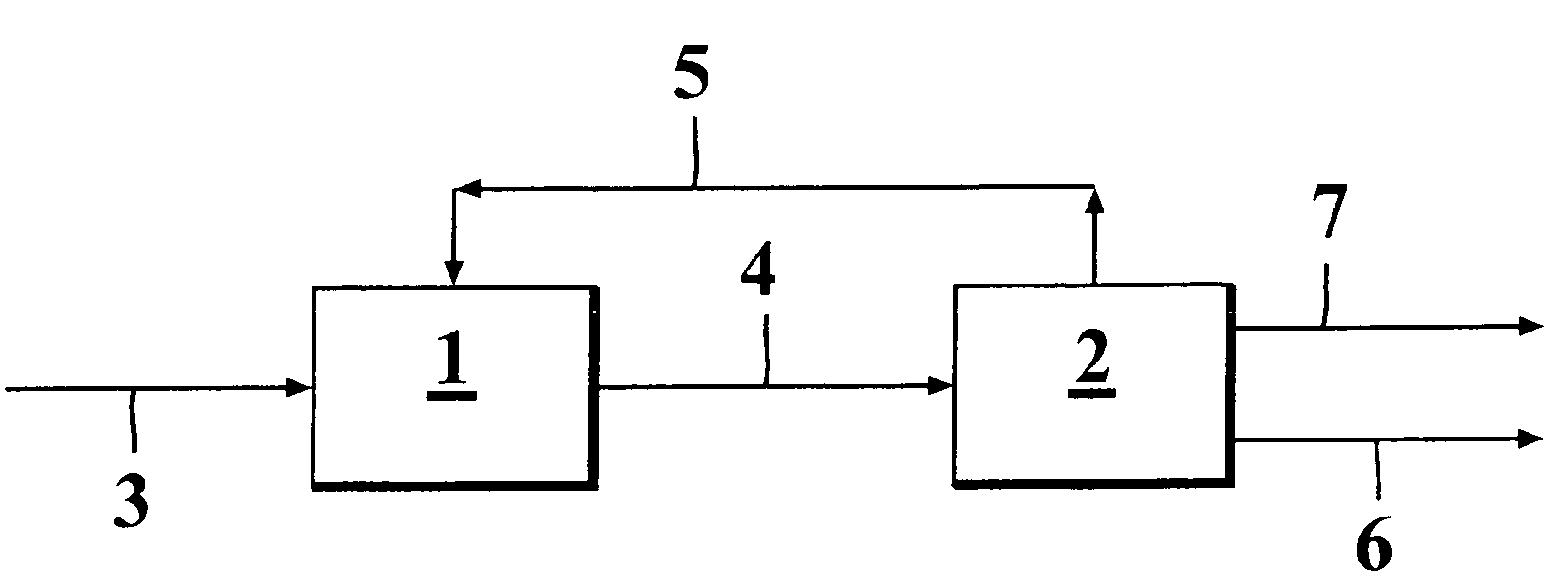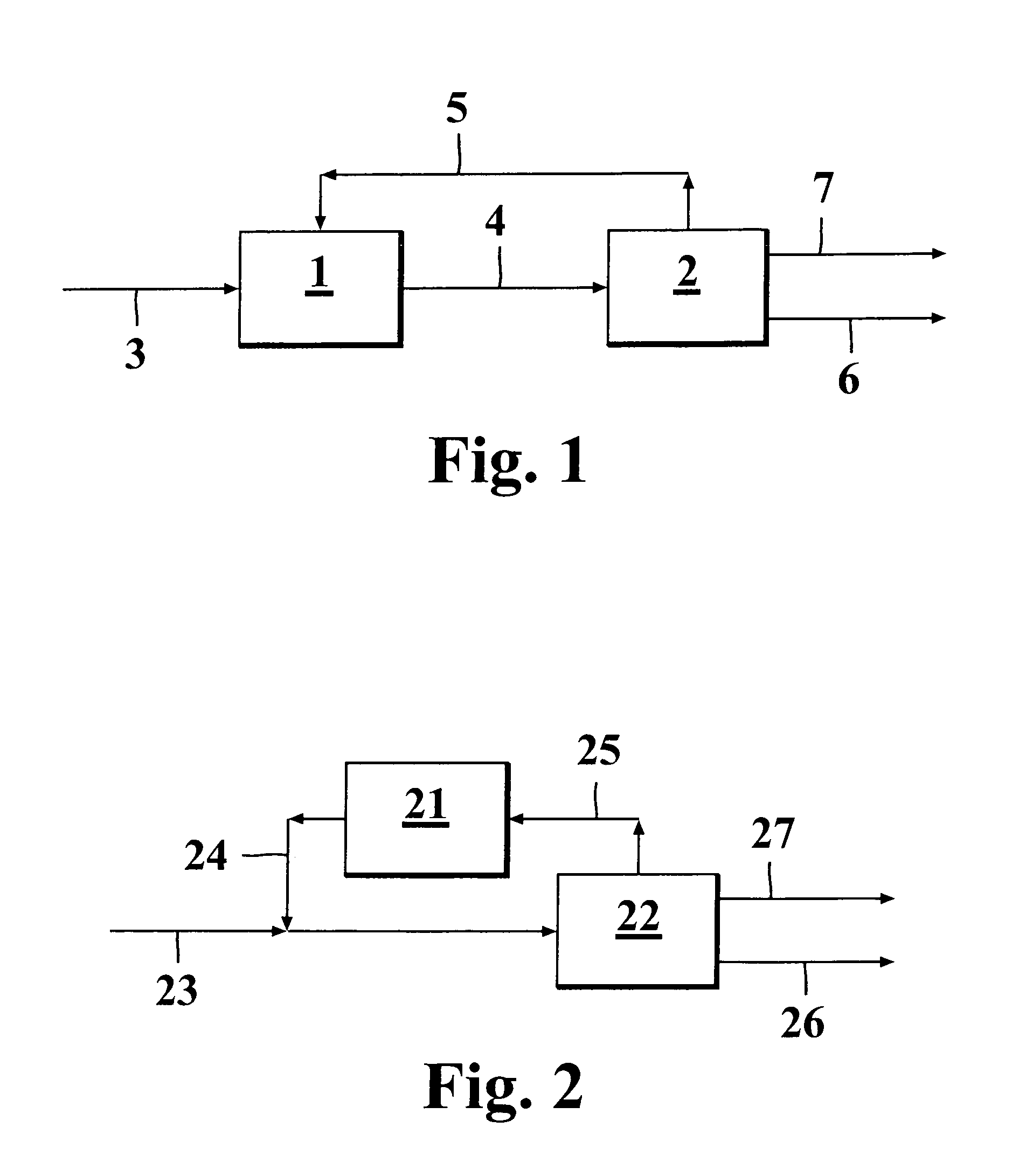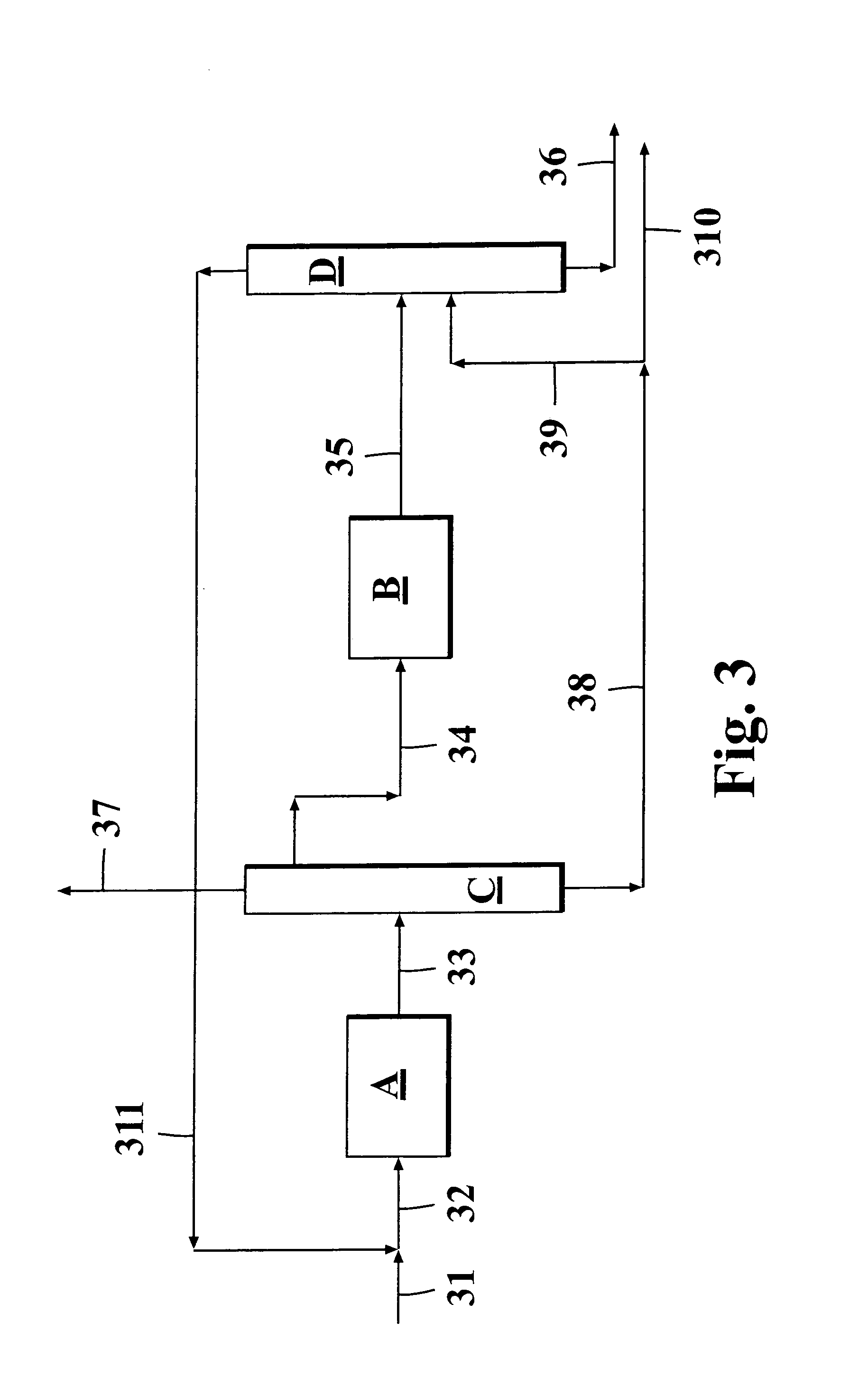Process for producing gasoline components
a gasoline and process technology, applied in the direction of hydrocarbon preparation catalysts, organic chemistry, chemistry apparatus and processes, etc., can solve the problems of limited alkylate production, high cost, and questionable etherification
- Summary
- Abstract
- Description
- Claims
- Application Information
AI Technical Summary
Benefits of technology
Problems solved by technology
Method used
Image
Examples
example 1
[0069]The process configuration according to FIG. 3 was simulated for producing isoolefin dimers from a hydrocarbon feed containing C4 hydrocarbons. The system has been optimized in order to get the amount of isobutane and butanes in flow leaving the unit to be equal.
[0070]Example 1 presents a system where the combination of skeletal isomerization and dimerization are used for producing an optimal feed for alkylation besides of producing dimer itself. In this case feed 31 is combined with the recycled C4 fraction 311 and the combined stream 32 is conducted to the skeletal isomerization unit A. The resulting stream 33 is conducted to a C4 splitter B, which is mainly intended to enrich the alkylation feed in respect of the higher boiling cis-2-butene and trans-2-butene, which are especially suited for alkylation feedstock. Moreover, from the top of this column is taken a C3 stream 37 in order to prevent their accumulation to the recycle. This column requires significant reboiler duty ...
example 2
[0073]The process for producing isoolefin dimers from a hydrocarbon flow containing C4 hydrocarbons was simulated using a process configuration according to FIG. 4.
[0074]Example 2 presents system where skeletal isomerization and dimerization are connected in a simpler manner. The mixed C4-feed 41 is connected with the recycle C4-stream 49 and conducted to the skeletal isomerization unit A. The isomerized stream 43 is conducted to the dimerization unit B. The dimerized product is further conducted to the recycle column C. This column separates dimer product and the necessary amount of the unreacted C4's from the dimerization effluent as bottom product 45. The C4 recycle stream is taken as side draw 49 and C3s are removed from the recycle via the distillate of column C. The bottom product of column C, stream 45 is further divided in column D into dimer product 46 and C4 raffinate stream 47. The conversion to dimers can be optimized by adjusting the recycle stream 49. The advantage of ...
example 3
[0077]The process for producing isooctane from a hydrocarbon flow containing isobutene was simulated using a process configuration according to FIG. 5.
[0078]Example 3 presents a system where the C4 feed stream 51 is first conducted to the skeletal isomerization unit A. The effluent of isomerization is combined with the C4 recycle stream 59 and the combined stream 53 is conducted to the dimerization unit B. The effluent of the dimerization unit 54 is conducted to the recycle column C. This column separates dimer product and the necessary amount of the unreacted C4's from the dimerization effluent as bottom product 55. The C4 recycle stream is taken as side draw 59 and C3's are removed from the recycle via the distillate of column C. The bottom product of column C, stream 55 is further splitted in column D into dimer product 56 and C4 raffinate stream 57. The advantage of this system is that the skeletal isomerization unit can be made essentially smaller that in the two previous cases...
PUM
| Property | Measurement | Unit |
|---|---|---|
| octane number | aaaaa | aaaaa |
| pressure | aaaaa | aaaaa |
| temperature | aaaaa | aaaaa |
Abstract
Description
Claims
Application Information
 Login to View More
Login to View More - R&D
- Intellectual Property
- Life Sciences
- Materials
- Tech Scout
- Unparalleled Data Quality
- Higher Quality Content
- 60% Fewer Hallucinations
Browse by: Latest US Patents, China's latest patents, Technical Efficacy Thesaurus, Application Domain, Technology Topic, Popular Technical Reports.
© 2025 PatSnap. All rights reserved.Legal|Privacy policy|Modern Slavery Act Transparency Statement|Sitemap|About US| Contact US: help@patsnap.com



